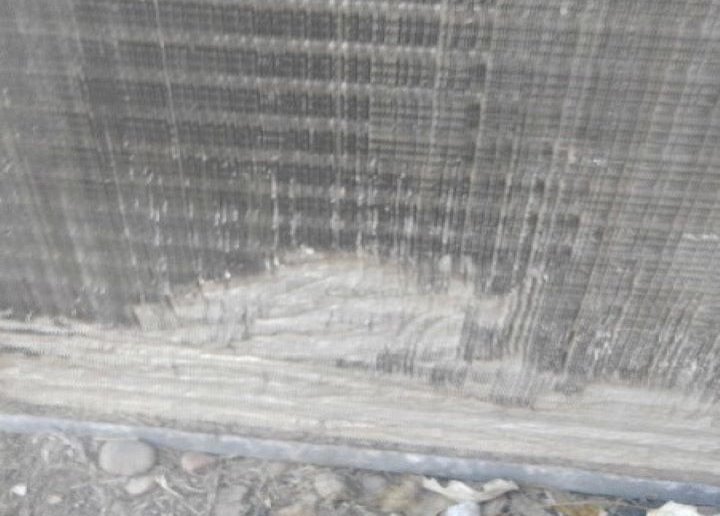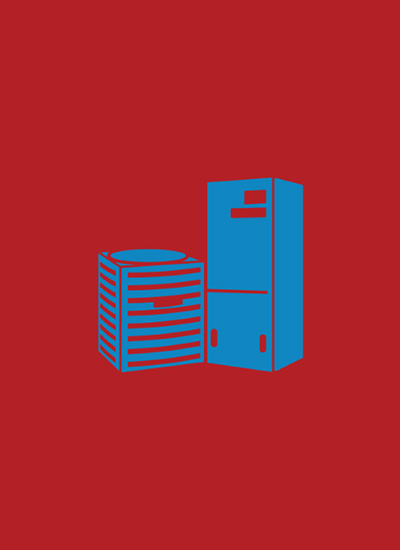Receive comprehensive assessment results for claims
with HVAC and Refrigeration equipment.
Receive comprehensive assessment results for claims with HVAC and Refrigeration equipment.
Spring Storm
Claims Trends
Other Causes
of Loss
Repair and Replacement
Solutions
Reported vs. Actual
Cause of Loss
Register for the Spring
Storms Webinar
Impacts to HVAC Systems Frequently Appearing in Wind and Hail Claims
Spring storms lead to numerous claims that carriers need to resolve.
Consider this data before settling a claim without an expert assessment.
Spring Storm
Claims Trends
Other Causes
of Loss
Repair and Replacement
Solutions
Reported vs. Actual
Cause of Loss
Register for the Spring
Storms Webinar
Spring Storm Claims Trends
QUESTION 1/3
Nearly 80% of equipment impacted by hail could be repaired.
CORRECT
True!
Only 20% of HVAC and Refrigeration equipment with hail as the cause of loss required replacement.
INCORRECT
Sorry, the correct answer is TRUE.
Less than 20% of HVAC and Refrigeration equipment that HVACi determined to have hail as the cause of loss needed to be replaced.
QUESTION 2/3
Equipment with confirmed wind damage most likely needed replacement.
INCORRECT
Sorry, the correct answer is FALSE.
58% of wind-damaged equipment that HVACi assessed could be repaired.
CORRECT
False!
58% of wind-damaged equipment that HVACi assessed could be repaired.
QUESTION 3/3
Hail is the most frequently claimed peril for equipment that HVACi assessed.
CORRECT
True!
Policyholders claimed that hail damaged their HVAC and Refrigeration equipment 1/3 of the time. But the cause of loss was recategorized, in some cases, following a thorough evaluation.
INCORRECT
Sorry, the correct answer is TRUE.
Policyholders claimed that hail damaged their HVAC and Refrigeration equipment 1/3 of the time. But the cause of loss was recategorized, in some cases, following a thorough evaluation.
Don’t settle for unnecessary replacements.
Storms from hail and wind can cause devastating losses for residential and commercial policyholders. But before carriers settle for replacements, it's critical adjusters confirm the cause of loss and scope of damage. By not doing so, they risk settling for equipment damaged by a typically non-covered peril or for components that are functioning as designed.
DID YOU KNOW?
80%
of equipment impacted by hail could be repaired
58%
of wind-damaged equipment could be repaired
34%
of claimed equipment had a reported cause of loss of hail
OTHER CAUSES OF LOSS

FOREIGN OBJECT IMPACT

IMPROPER MAINTENANCE

WEAR AND TEAR
WEAR AND TEAR
REPAIR AND REPLACEMENT SOLUTIONS

CLEANING
Spring storms may bring gusty winds that blow leaves, dust, dirt, and other debris into an HVAC system’s condenser coils. The coils have copper tubing that carries the refrigerant. Malleable aluminum fins typically surround the copper tubes.
Having dirt and debris in these fins could diminish their effectiveness, depending on the severity. Cleaning dirty coils can frequently return them to proper working order; however, insureds and their contractors should be mindful of what they use to clean components to not risk unnecessary damage.

COMBING
Dented or deformed tube and fin coil could block airflow, which may impact the system’s effectiveness, depending on the extent of the impact. Thin, plastic, or metal combs can straighten traditional tube and fin coils and return them to the proper position.
Contractors may not initially give combing as an option because of the time it takes to do, but it is a simple, inexpensive repair that can return equipment to pre-loss condition. Not all fins are able to be combed, and an objective evaluation would determine that.

NEW FAN AND/OR
FAN MOTOR
Hail or wind-thrown objects could dent or break the fan motor or blades of the condensing unit, which could cause a system imbalance or other malfunctions.
Policyholders can return equipment to pre-loss condition by replacing the fan or fan motor – before the impacts get worse.

NEW CONDENSER
COIL
Traditional fins that are torn, flattened too far, or corroded can’t be combed. Other types of condenser coils, including micro-channel or spine fin coils, also can’t be combed and must be replaced.
Before settling for a new condensing unit, check to see if the condensing coil is available as HVAC distributors and manufacturers typically keep these in stock or can make them on demand. It’s a much cheaper – and just as viable – solution.

NEW CONDENSING
UNIT
Impacts may be severe enough, or other circumstances exist, to make the best solution replacing the condensing unit. Adjusters should make sure the replacement has a compatible Seasonal Energy Efficiency Ratio to the indoor HVAC equipment or risk a follow-up claim that may require a full HVAC replacement.
Additional components, including a new evaporating coil, may be necessary to make the equipment compatible.

FULL REPLACEMENT
Typically, less than 20 percent of HVAC systems impacted by hail need complete replacement. The most common reason a full-system replacement would be necessary is if the indoor unit has a built-in integrated coil that can’t be changed out independently.
Adjusters who do have to settle for replacement equipment should ensure that the new system is of Like Kind and Quality to what the policyholder had and that the costs are in line with market values.
REPORTED VS. ACTUAL CAUSE OF LOSS
Actual Cause of Loss For HVAC Equipment With Wind or Hail as the Reported Cause of Loss
1%
60%
1%
20%
3%
15%
How HVACi can help settle claims more accurately.
Adjusters handling claims related to spring storms need expert support to ensure they settle claims quickly and accurately. HVACi provides a better all-in-one HVAC and Refrigeration system claims solution and desktop pricing review option for insurance carriers. The company’s proven processes leverage an extensive in-field network, expert knowledge, and engineering best practices.
$3,811
Average residential claim accuracy for all claims
Less than
5 business days
Average cycle times for residential and commercial claims
$31,155
Average commercial claim accuracy for all claims
Evaluating Spring Storm Damage to HVAC Equipment Webinar
Adjusters who participate throughout the session are eligible for CE credit toward their FL, MS, NC, TX, WY licenses. Fill out the form to save your spot for this event!